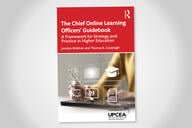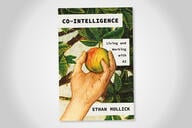You have /5 articles left.
Sign up for a free account or log in.
This conversation is with the authors of the chapter “Pandemic Fever Pitch Terms That Defined a Moment in Higher Education” in our new co-edited book, Recentering Learning: Complexity, Resilience and Adaptability in Higher Education (JHU Press, 2024). The book (in paper and ebook form) is available for order from JHU Press and Amazon.
Lorna S. Gonzalez is the assistant vice president for digital learning at CSU Channel Islands. Megan Eberhardt-Alstot is the interim director of the Learning Resource Center and Academic Success Services at California State University Channel Islands. Jill Leafstedt is the dean of extended university and digital learning at the university.
Q: What main themes of your chapter would you like readers to take away and bring back to their institutions and organizations?
A: Our chapter explored the ways that moments of disruption generate opportunities for discourse that centers learning. We explored two primary questions:
- During periods of change, how do rhetorical artifacts reify societal values and anxieties?
- How can artifacts, such as fever-pitch terms, function as vehicles for innovation?
Using the COVID-19 pandemic as the time frame under investigation, we unpacked virtual learning and learning loss as rhetorical artifacts, identifying how each term circulated in publications, policies, internet searches and decision-making.
It’s fascinating to reflect on how the intensity of these terms has since slowly receded, albeit leaving remnants in discourse about academic preparation and enrollment. Meanwhile, another change moment—generative AI diffusion—has introduced another wave of feedback loops and narratives about learning.
Readers can share this case study with their colleagues and take the recommendations about “fever-pitch terms as vehicles for innovation” back to their institutions and organizations. That is, readers can position themselves to lead during times of change by participating in the discourse, conducting scholarly investigation, critically evaluating feedback loops, collaborating with cross-disciplinary and cross-institutional partners and finding ways to innovate. These actions continue to serve leaders in the new and next moment of learning paradigm disruption and change.
Q: What are potential opportunities and levers to recenter learning within research-intensive colleges and universities?
A: Reframed for our context as a public, regional-serving institution, recentering learning requires engaging deeply with the lived realities of our students—where they are coming from, where they are going and how their education impacts our local region. This frame allows us to take a localized look at how moments such as the COVID-19 pandemic and corresponding fever-pitch terms impact not only the national dialogue but also the everyday lives of our students and community.
Recognizing these unique regional dynamics helps shape more responsive and equitable learning strategies that are tailored to student needs. Terms such as “learning loss” can serve as divisive tools, pulling segments of education farther from one another or closer together depending on the local framing. Our chapter explored how terms and their narratives can function as levers of the moment, influencing decision-makers with rippling effects. Savvy educational leaders will tune in to the discourse and pay attention to feedback loops.
Q: How might the rapid evolution of generative AI impact the work of recentering learning?
A: We find that rapid generative AI diffusion has produced another wave of rhetorical artifacts that reflect societal values and anxieties. From reanimated discourse about academic integrity, to assessment of and for learning, to ways that technologies reinforce bias and several other important topics, part of the work of recentering learning requires acknowledging that learning paradigms evolve and that business as usual will not serve today’s learners who seek reliable preparation for their futures.
Generative AI is functioning as a vehicle for innovation in personalized learning, as we’ve seen through examples like “intelligent” tutors (e.g., Khanmigo); custom GPTs (e.g., PlayLab); and even curated interactive notebooks (e.g., Notebook LM). It’s offering a new kind of agency to learners (for a good read, see “Without These Tools, I’d Be Lost” in Nature). On the other hand, some of these tools have shown to do harm (e.g., Character.ai); engender reliance on them (CITE Wiley’s Substack); and increase loneliness. Therefore, the work of recentering learning means recentering our focus on learners—the humans involved in the learning experience.




